Klingon
D’aka class

D’aka class (FASA-2301)
The D’aka class assault ship, known to Starfleet as the T-3 class, was in production from 2248 to 2281. Of the 480 that were built, in 2281, 286 remained in service, 24 were in reserve fleets, 112 had been destroyed, 5 had been scrapped, and 53 had been sold to the civil sector. The class name came from a word which meant “mover.”[1]
References
Planet, Class-M

Earth (ENT-78)
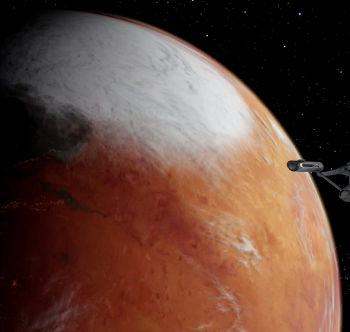
Vulcan (TOS-34)
Terrestrial. Age ranged from 3-10 billion years. Diameter was 10,000 to 15,000 km. Typically located in the Ecosphere of a planetary system. Surface water was abundant; if water or ice covered more than 80% of the surface, the planet was considered Class O or Class P. Atmosphere was primarily primarily nitrogen, oxygen, and trace elements. Contained extensive vegitation and animal life.[8] Capable of supporting carbon-based, humanoid life.[1]
The designation apparently stemmed from the Vulcan word “Minshara,” which was used to designate planets capable of supporting life.[7] Class-M planets could vary widely in color, cloud cover, and overall appearance. Most Class-M planets were characterized by a relatively thin, tectonically active crust floating on a molten rock mantle, which in turn surrounded a liquid metal outer core and a solid inner core composed of metal crystals.
› Continue reading
Milky Way Galaxy

Milky Way (TOS-01)
The Milky Way was a spiral galaxy approximately 100 thousand light years across, divided into four quadrants, designated by the Greek letters Alpha, Beta, Gamma, and Delta, and were arbitrarily divided using Earth as a reference point. As a result, Earth, and the Sol Sector, fell in the Alpha Quadrant, while the Vulcan and Andorian Sectors fell in the Beta Quadrant. The Gamma and Delta Quadrants remained largely unexplored by the early 25th century, though knowledge of those regions was greatly increased thanks to the Bajoran wormhole and the U.S.S. Voyager NCC-74656, respectively.[3] The galaxy was surrounded by a nearly-impenetrable energy field, dubbed the Galactic Barrier, with unpredictable neurogenic properties.[1, 3] Likewise, the core of the galaxy is surrounded by a distinct but related field, dubbed the Great Barrier.[2, 3]
› Continue reading
Asteroid

Asteroid (TOS-58)
Small celestial body composed of rock and metal, typically much smaller than a planet, often irregularly shaped. Asteroids often occurred in orbital belts within a star system, sometimes the debris remaining from the formation of that system, other times the fragments remaining from the disintegration of a planet. Larger asteroids were sometimes called planetoids.
In 2267, the U.S.S. Enterprise NCC-1701 attempted to divert an asteroid that was on a collision course with an inhabited planet.[1] A Type-C asteroid crashed into an unpopulated continent of Penthara IV in 2367, threatening an ecological disaster until the U.S.S. Enterprise NCC-170-D helped dispel its dust cloud.[2] Another asteroid from the Pelloris Field threatened Tessen III with the same type of destruction in 2368 before it was vaporized by the same starship. Its nitrium alloy core prevented a tractor beam lock, and it was undamaged when hit by photon torpedoes. It was later discovered to be the home of metal parasites.[3]
› Continue reading
Humans
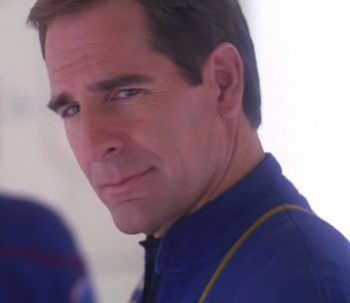
Jonathan Archer (ENT-31)
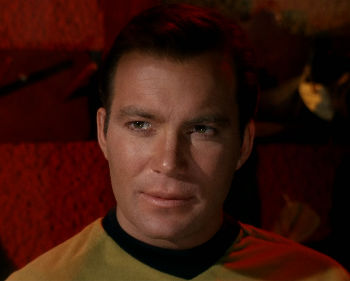
James T. Kirk (TOS-05)
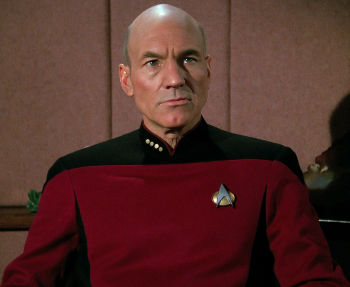
Jean-Luc Picard (TNG-165)
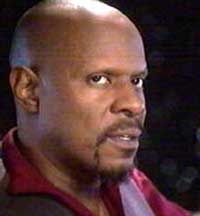
Benjamin Sisko (DS9-541)
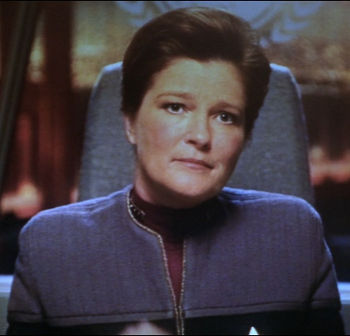
Kathryn Janeway (ST-10)
Species originating on Earth. According to the Talosians in the 2250s, “The customs and history of [Humans] show[s] a unique hatred of captivity. Even when it’s pleasant and benevolent, [they] prefer death. This makes [them] too violent and dangerous a species for [the Talosians’] needs.” The Talosians had scanned the U.S.S. Enterprise NCC-1701‘s databanks, and had gleaned quite a bit of information about Human history.[1]
Notable Humans
References
- 1. “The Cage.” Star Trek, Episode 00. Television. 1965 (Unaired).
- 2. “Where No Man Has Gone Before.” Star Trek, Episode 01. Television. 22 September 1966.
- 3. “Encounter at Farpoint.” Star Trek: The Next Generation, Episodes 101-102. Television. 28 September 1987.
- 4. “Emissary.” Star Trek: Deep Space Nine, Episodes 401-402. Television. 4 January 1993.
- 5. “Caretaker.” Star Trek: Voyager, Episodes 101-102. Television. 16 January 1995.
- 6. “Broken Bow.” Star Trek: Enterprise, Episodes 01-02. Television. 26 September 2001.
Dilithium
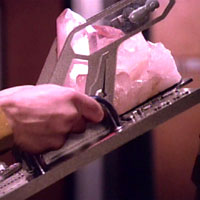
Dilithium (TNG-147)
Crystalline substance used in warp propulsion systems to regulate the matter/antimatter reactions that provide the energy necessary for faster-than-light speed. Naturally occurring dilithium was extremely rare and was mined on only a few planets, such as Coridan,[1] Troyius[2] and Rura Penthe.[4] In 2286, a method of recrystalizing dilithium was discovered, reducing the need for mining new deposits of the mineral.[3]
References
- 1. “Journey to Babel.” Star Trek, Episode 44. Television. 17 November 1967.
- 2. “Elaan of Troyius.” Star Trek, Episode 57. Television. 20 December 1968.
- 3. Star Trek IV: The Voyage Home. Film. 26 November 1986.
- 4. Star Trek VI: The Undiscovered Country. Film. 6 December 1991.
Computer Interface
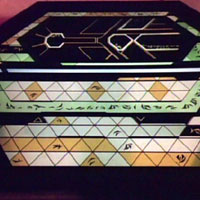
Custodian Controls (TNG-118)
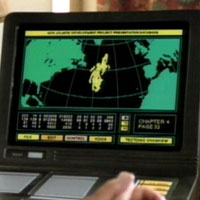
Computer Interface (TNG-178)

Holographic Computer Interface (TNG-107)
![]()
Iconic Display Console (TNG-193)
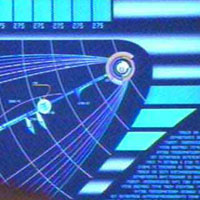
TCARS Interface (VOY-218)

Computer Interface (TNG-178)
Method of interacting with a computer system. The computers aboard the U.S.S. Enterprise NCC-1701 utilized tactile buttons and knobs, as well as motion-sensitive displays and consoles.[1] By the 24th century, touch-sensitive display panels had largely replaced the tactile interfaces,[2] though there were also some uses for holographic interfaces.[3]
References
- 1. “The Cage.” Star Trek, Episode 00. Television. 1965 (Unaired).
- 2. “Encounter at Farpoint.” Star Trek: The Next Generation, Episodes 101-102. Television. 28 September 1987.
- 3. “The Last Outpost.” Star Trek: The Next Generation, Episode 107. Television. 19 October 1987.
Computer
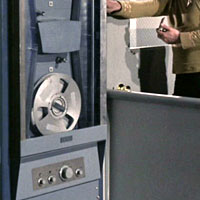
Data storage, retreival and computational device. Early computers on Earth were quite large and used magnetic tape to store information.[1]
References
Arm wrestling

Simple contest of strength in which two players attempt to force their opponent to drop their hand to the table, though the Klingons were known to add knives that would impale the losing player’s hand.[1]
References
Sword
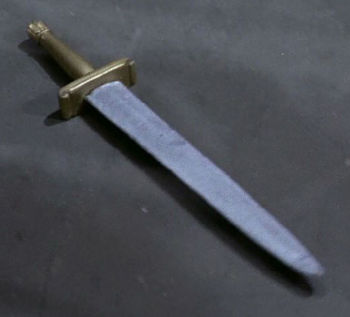
Sword (TOS-43)
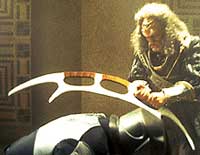
Bat’leth (DS9-439)
Edged weapon. The Kaylar on Rigel VII used these weapons.[1] The Klingons also used swords, including a unique design called a bat’leth.[3] Humans used swords as well, including a design called a rapier used in the sport of fencing.[2]
References
- 1. “The Cage.” Star Trek, Episode 00. Television. 1965 (Unaired).
- 2. “The Naked Time.” Star Trek, Episode 06. Television. 29 September 1966.
- 3. “Reunion.” Star Trek: The Next Generation, Episode 181. Television. 5 November 1990.
Categories
- Animated Series (60)
- Articles (28)
- Books (447)
- Cast & Crew (79)
- Comics (22)
- DS9 (328)
- Early Voyages (125)
- Education (5)
- Enterprise (373)
- Excelsior (36)
- Food (19)
- Games (223)
- Klingon (70)
- Library (1,543)
- Logs (593)
- Lost Era (55)
- Medicine (18)
- Merrimac (1)
- Mirror (35)
- Miscellaneous (13)
- New Frontier (54)
- Next Generation (635)
- Original Series (681)
- Personnel (436)
- Places (369)
- Politics (12)
- Recreation (10)
- SCE (41)
- Science (1)
- Shatnerverse (9)
- Ships (455)
- Site Updates (98)
- Starfleet Academy (86)
- Stargazer (42)
- STO (61)
- Technology (45)
- Titan (59)
- To Boldly Go (1)
- TV/Film (214)
- Uncategorized (4)
- Vanguard (76)
- Voyager (236)
- Weapons (27)
- Xenology (54)